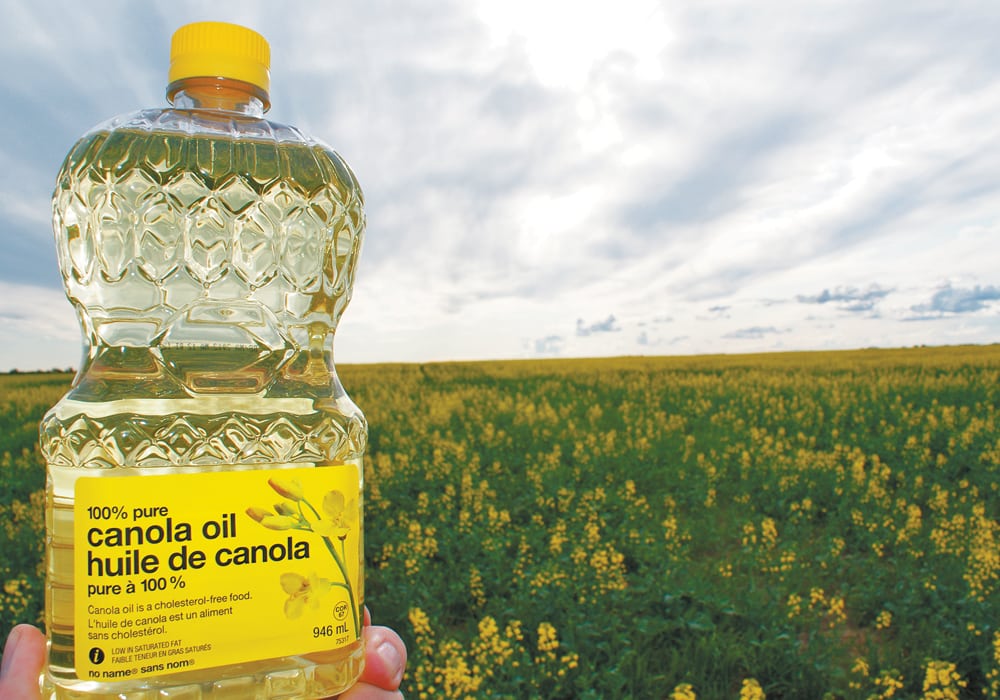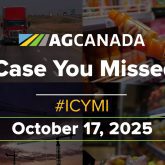Farmers are concerned about losing NAFTA’s Chapter 19, saying it has been valuable in their relations with the U.S.
In 2017, Canada exported more than $3 billion worth of canola oil, meal and other canola products to the United States.
Those exports represent a fair chunk of the $23.3 billion in agricultural commodities and food that Canada shipped to the U.S last year.
Given the billions of dollars, it’s obvious why Jim Everson is worried about the North American Free Trade Agreement.
“The biggest concern would be, as a result of a termination of NAFTA, the reintroduction of tariffs in agricultural goods,” said Everson, president of the Canola Council of Canada.
Read Also

Feds propose overhaul of chronic wasting disease control program
Chronic Wasting disease control program getting updated by Canadian Food Inspection Agency with feedback encouraged from producers.
“Or, the potential … of some greater use of non-tariff trade barriers.”
Most agricultural leaders and many farmers had similar thoughts last week as negotiators for Canada, Mexico and the U.S. tried to hammer out a new NAFTA deal in Washington. The urgent talks began Aug. 28, after Mexico and America announced a bilateral trade agreement. Canadian trade negotiators immediately went to Washington to hash out the terms and conditions of a potential deal with their American and Mexican counterparts.
As of press time Aug. 31, the countries hadn’t reached an agreement on NAFTA 2.0.
A sticking point in the negotiations has been Chapter 19, a mechanism to resolve disputes over dumping and countervailing duties. For many in Canada’s agri-food industry, Chapter 19 has been a meaningful part of NAFTA and the earlier Canada-U.S. Free Trade Agreement. Over the last three decades the process to resolve disputes has been used about 120 times.
More than 20 of the cases were related to the agri-food sector, including decisions on the trade of beef, pork, live swine, durum wheat and raspberries, based on data from the NAFTA Secretariat.
Chapter 19 has been particularly important for Canada’s pork industry. Since 1989, when the Canada-U.S. Free Trade Agreement took effect, there’s been about seven cases involving live swine, chilled pork and frozen pork.
“It does, overall, make the entire deal stronger,” said Gary Stordy, CPC director of corporate and government relations.
“It’s not just for agriculture. It’s for any company or commodity … or in any product’s interest, to have that in place.”
Chapter 19 is now in jeopardy because the U.S.-Mexico bilateral deal may eliminate it from NAFTA or substantially weaken the dispute resolution process, according to media reports.
Foreign Minister Chrystia Freeland has said maintaining the dispute mechanism is essential for Canada and potentially a deal breaker. The U.S. would like to rip Chapter 19 from NAFTA, as some see it as an infringement on America’s sovereignty.
For many in Canada’s ag industry, Chapter 19 is a check on U.S. power.
“It’s quite important for a couple of reasons,” said Chris White, president of the Canadian Meat Council.
“It’s the independence. You’ve got a bi-national panel that looks at it (the trade case). That takes a lot of the political dimensions out of it…. If you look at the scale we’re competing against with the Americans… (it’s important because) we know we’re disadvantaged at the outset.”
There is a school of thought that Canada doesn’t need dispute settlement in NAFTA. Instead, Canadian businesses and industries can use the World Trade Organization to challenge American duties and barriers to trade.
However, many suspect that the Americans are trying to undermine the WTO.
U.S. President Donald Trump has called the WTO a “disaster,” and the U.S. has been blocking the appointment of judges to the WTO appellate body. As a result, the appellate court could become “completely paralyzed” by the end of 2019, Bloomberg reported.
“(U.S. Trade Representative Robert) Lighthizer wants the United States to have free reign … to do whatever it wants,” said Patrick Leblond, who specializes in global trade for the Centre for International Governance Innovation in Waterloo, Ont.
“So, of course it makes sense to remove Chapter 19. Of course it makes sense to weaken (the WTO). If that’s the route the U.S. is pursuing, Canada should say no.”
Canada’s meat industry used the WTO to successfully challenge the Americans on mandatory country-of-origin labelling for meat, but the process took about a decade.
Going through the U.S. courts or the WTO are “lengthy ways of solving a problem,” Stordy said.
Freeland and Prime Minister Justin Trudeau have taken the position that the federal government will walk away from NAFTA if it’s a bad deal because no deal is better than a bad deal.
The question then becomes: if there’s no Chapter 19, does that make NAFTA 2.0 a bad deal?
That’s difficult to answer because there could be language in NAFTA 2.0 that could compensate for the loss of Chapter 19, White said.
“(But) the industry would be concerned if Chapter 19 was taken out completely and there were no provisions to offset (its) removal.”
For Everson, it all comes back to certainty.
No NAFTA deal or prolonged negotiations create uncertainty, including the possibility of U.S. tariffs on Canadian ag products.
“The reintroduction of any tariffs with our most important trading partner is not a good thing.”
















